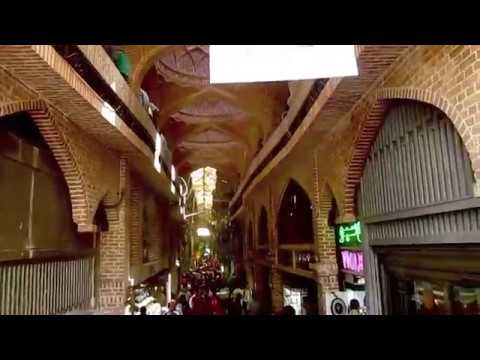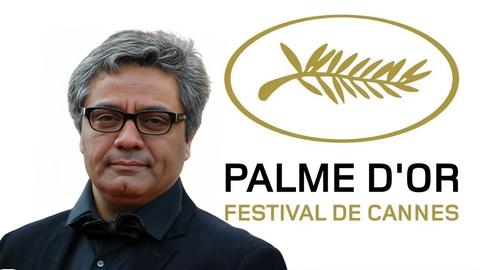
In June of 2014 Troy and Cyrus Homesley, two Iranian-American brothers from North Carolina, embarked on a journey to Iran. Growing up in Mooresville, North Carolina with an American father and Iranian mother, the brothers feel their bi-cultural upbringing integrated the best of both American and traditional Persian culture, instilling values of tolerance and openness that helped shape their worldview.
Troy, a first year law student at the University of North Carolina, and his younger brother Cyrus, a sophomore studying physics and mathematics at North Carolina State University, decided to document their journey with a video camera. The rich landscapes and vivid moments they experienced, they soon realized, needed to be captured in the fullest way. I talked to Troy and Cyrus about the 13-minute documentary they produced of their travels, 30 Days under the Persian Sun. They talked about what it was like to meet over 60 relatives for the first time in their lives, and why Iran was unlike any other destination that have ever visited.
One of the last scenes in your film shows a map illustrating all the cities you visited. How did you chart your journey?
We decided to take the three-day train from Ankara, Turkey to Tabriz, Iran because there is something that seems more natural about being introduced to a place slowly, by land, instead of suddenly turning up somewhere via airplane. It built up a certain level of suspense as we traversed the vast expanses of Eastern Anatolia and slowly chugged along the railway towards Iran.
Within Iran, we generally traveled by bus and shared taxis. Using these methods of transportation, it was quite easy to get around. There are regular buses going to every major city in the country, and usually a minibus or a shared taxi going to local villages as well. It also appeared that most Iranians double as taxi drivers, with random cars regularly rolling up to us if we looked lost, offering to give us a ride anywhere we wanted! The taxi drivers were true to ta’arof (form of civility) in that they always refused to accept payment for their services, of course they usually gave in after a while. We even once caught a two-hour long ride in the bed of a truck after finishing off a trek and ending in a remote village!
There is a powerful scene in the film where you both Skype with your mother in the US from the living room of the Tehran relatives. Can you tell us more about this?
That scene was one of my favorite moments from the whole trip, perhaps in my life. It was our mother talking to her family, in fact seeing them and hearing their voices for the first time in 40 years. As you can imagine, it was very powerful to see technology breaking down a wall of separation that had slowly built up between two great nations, and one big family finally together again. Apart from my mother and her mother, my entire Iranian family lives in Iran, mostly in Tehran. All of my mother's aunts, uncles and cousins are still happily living their lives in Iran. The family was ecstatic and lively when we arrived, they even planned a party attended by at least 60 family members to celebrate our safe arrival! Our family was kind enough to host us at their apartment for our whole stay in Tehran. We had the amazing experience of sharing meals with them, visiting each family member across the city and generally enjoying the infinite supply of fruits, sherbet, chai (tea) and doogh (Persian yogurt drink).
What are some of the issues that one has to deal with when traveling to Iran for the first time?
We experienced no major setbacks while traveling in Iran. Traveling in Iran is amazingly hassle-free, especially compared to other countries I've visited before. The people are laid back, the salesmen are smart, but not pushy, crime is almost nonexistent in many areas, and there is always someone willing to help, if they can. Navigating the country is quite easy, especially if you know at least a few basic Farsi phrases, use a good guidebook and of course some common sense.
Did anything surprise you, culturally?
Perhaps most surprising was the hospitality and openness that we were greeted with. It seemed that at every turn someone was inviting us to dinner at their house, sharing chai or food with us, introducing us to their families, or just plain excited to meet us and discuss the current state of affairs between the United States and Iran.
Another surprise was the extremity to which some individuals and industries have been affected by sanctions levied by the United States and Europe against Iran. Especially in the area of engineering and construction, engineers and laborers are struggling to find jobs as many of the construction projects are coming to a halt as a result of increasingly expensive raw materials. We also saw that sanctions are affecting the ability of Iranians to travel cheaply and quickly within their own country via airlines.
I remember one story vividly, in which an elderly man was forced to take a grueling 13-hour bus from Shiraz to Kermanshah (his hometown) for a funeral, whereas he would usually take a cheap one hour flight to Kermanshah. Unfortunately, this route has been curtailed due to the inaccessibility of important airplane parts as a result of sanctions. These stories were surprising, and only describe a few of the many ways Iranians are affected by the sanctions on a day-to-day basis.
Did Iranians seem to resent the West, because of the effects of these sanctions?
It would be surprising to the general American public to see that Iranians showed little to no signs of extremism nor hatred for the West or anyone associated with it. Iranians are quick to clarify that although they may have some issues with the actions of the United States government, but they do not translate this rocky relationship to their relationships with individuals who happen to live under the government that takes those actions.
Did you have any issues with the language barrier?
Luckily, I (Troy) have about two years of Farsi classes under my belt from college. However, I should clarify that I was never the best Farsi student. With a few phrases and a willingness to use Ensha'Allah (God-willing), Mash'Allah (bravo), and Befarmaid (please), you can get by quite well in Iran. The truth is that in major city centers, you can usually find someone nearby who speaks good enough English to help you out.
The cinematography in the film is stunning. But what story are you trying to tell through these pictures?
Deep down, it is our hope that each person who sees this video will gain a more clear perception of what Iran is really like from an individual perspective, fragmenting away all the tropes, myths and misconceptions. I believe the film reveals a deep sameness between these two cultures separated by so many miles and mountains. This "sameness" shows a place not much different from our own home, a place where people are happy sometimes, sad sometimes, and most of the time just want to know that their futures are stable and that their children are safe. Iran is a place with landscapes and cityscapes, religious centers, homes full of parties, taxi drivers and roadside BBQs.
The differences are important, and they are what has kept Iran distinct for so long, but the similarities are where the common ground suddenly becomes clearly attainable, the point where nuclear talks and geopolitical disagreements might solve themselves. This story ultimately shows this common ground to Americans and the world in a way that is accessible and clear, at least we think so.
Why did you decide to focus on the landscape of Iran rather than the “faces of Iran?”
I believe that focusing so heavily on the landscape serves an important purpose, in that it grounds the images of people in a specific space, a space that happens to be mesmerizing, beautiful, comforting and attractive. Contrary to what many might think, Iran is not a desert nor is it a nuclear wasteland or a desolate urban sprawl. Instead it is a thriving nation with a range of ecosystems and living spaces and spiritual grounds. It is a place with soaring snow-capped peaks and lazy desert oases, mosques that bring you to the edge of paradise and streets bustling with bazaaris. It is a diverse landscape that entrances and attracts, and from my experience, people are usually a reflection or at least a product of the landscapes they inhabit.
Troy and Cyrus also have their own travel blogs in which both brothers separately delve into their trip to Iran in greater personal detail.
visit the accountability section
In this section of Iran Wire, you can contact the officials and launch your campaign for various problems























comments
Looks like a great adventure and glad to see you went to see your mother's homeland. You saw and did a lot! What's with the arabic music at the end? i get the western music you start with, since you grew up in the west, etc., but why arabic music? it's really disconcerting... Cheers!